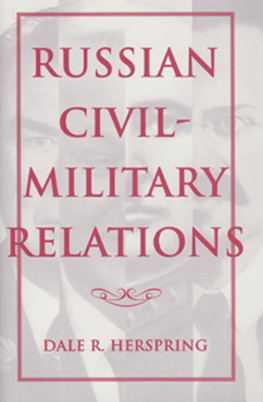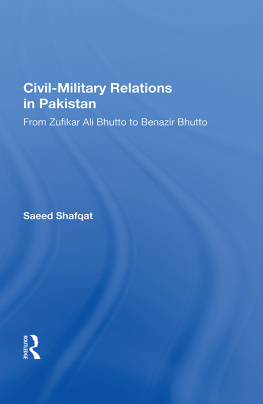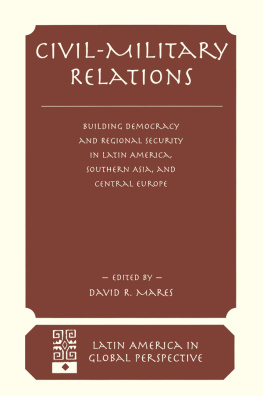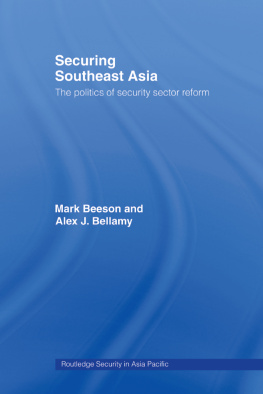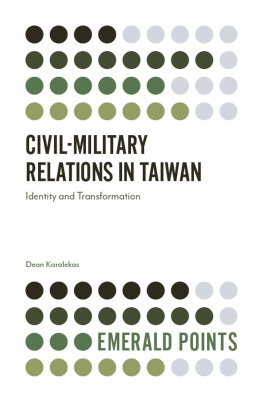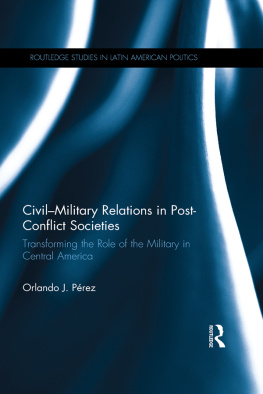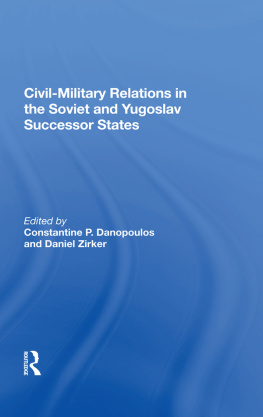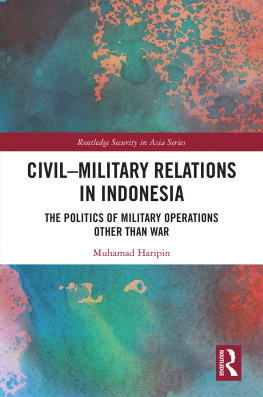Civil-Military Relations in Communist Systems
About the Book and Editors
Civil-Military Relations in Communist Systems
edited by Dale R. Herspring and Ivan Volgyes
This book represents the first attempt to deal with the problem of how to conceptualize the civil-military relations of communist systems within a common intellectual framework. The opening chapters present three major constructs originally designed for analyzing civil-military relations in the USSR: the interest group approach, the institutional congruence approach, and the participatory model. In subsequent chapters the utility of these approaches is tested against a wide variety of communist systems, including those of Cuba, the USSR, China, Romania, Hungary, the GDR, and Poland. In probing these issues for the first time, the authors shed considerable light on the transnational differences and similarities among communist systems, and the dynamics of civil-military relations in all communist systems.
Dale R. Herspring is a foreign service officer with the U.S. Department of State. A Fulbright fellow in the Federal Republic of Germany, he received his doctorate from the University of Southern California.
Ivan Volgyes, a native of Budapest, is currently director of the Graduate Program on Rural Transformation and professor of political science at the University of Nebraska at Lincoln.
Never has there been a revoiution which has emerged victorious without solving the military question.
Admiral Waldemar Verrter,
Chief of the Main Political Administration,
National People's Army of the GDR
Civil-Military Relations in Communist Systems
edited by Dale R. Herspring
and Ivan Volgyes
First published 1978 by Westview Press
Published 2018 by Routledge
52 Vanderbilt Avenue, New York, NY 10017
2 Park Square, Milton Park, Abingdon, Oxon OX14 4RN
Routledge is an imprint of the Taylor & Francis Group, an informa business
Copyright 1978 by Taylor & Francis
All rights reserved. No part of this book may be reprinted or reproduced or utilised in any form or by any electronic, mechanical, or other means, now known or hereafter invented, including photocopying and recording, or in any information storage or retrieval system, without permission in writing from the publishers.
Notice:
Product or corporate names may be trademarks or registered trademarks, and are used only for identification and explanation without intent to infringe.
Library of Congress Catalog Card Number: 78-180
ISBN 13: 978-0-367-01330-1 (hbk)
To Maureen and Nancy, whose patience, understanding, and-encouragement made this book possible
Contents
- Part 1
Some Conceptual Questions - Part 2
Country Studies - Part 3
The Soviet-East European Military Connection
- Part 1
Some Conceptual Questions - Part 2
Country Studies - Part 3
The Soviet-East European Military Connection
Guide
A number of individuals played an important role in the preparation of this volume. Above all, we would like to thank the contributors for their willingness to labor with the difficult task of attempting for the first time to relate the problem of civil-military relations in a variety of Communist political sytems to common conceptual frameworks. In addition, we would like to thank Ms. Nancy Dahl for her conscientious typing and Mervyn A. Seldon for her invaluable editorial assistance.
Finally, we are both indebted to the emotional and intellectual support extended by our wives, to whom this volume is affectionately dedicated. Without their patience, understanding, and encouragement, this volume would not have been possible.
Dale R. Herspring
Washington, D.C.
Ivan Volgyes
Lincoln, Nebraska
Introduction
Dale R. Herspring
The choice of a conceptual framework for analyzing civil-military relations in Communist systems is of vital interest not only to academics, but also to policymakers. To date, three major approaches to the problem of how to conceptualize Communist civil-military relations have been suggested. All of them have important policy and analytic implications. They include the interest group approach, the institutional congruence approach, and the participatory model.
The interest group approach advocated by Roman Kolkowicz (ship is more symbiotic? In the latter case, the West would be faced with a larger and perhaps more efficient military force than the interest group approach anticipates.
The historical institutional approach, represented by William E. Odom's article (), also has important implications for our attempt to understand civil-military relations in a Communist system such as the USSR. According to his analysis, the CPSU at its inception adopted a military organizational ethos because revolution is a military affairinternal warand because spreading revolution to other countries is also a military affairexternal war. The qualities and leadership skills demanded of Party cadres and officer cadres are strikingly similar. Hence, it might be said that the military "coup" occurred in 1917 in the sense that the military-bureaucratic ethos of the Bolshevik Party was brought to the reconstruction of the state. Furthermore, the new civil-military pattern has many signs of being a throwback to earlier, Imperial Russian patterns. Accordingly, it is a mistake to see the Soviet civil-military boundary as marking a significant political cleavage.
The alienation between the Party and the army, which Kolkowicz finds and attributes to the army's "military professionalism," has little empirical basis in Odom's view. Military officers are executants just as are the leading Party cadres, and their policymaking influence is bureaucratic and administrative, not competitive with the Party. Conflict is largely intra-institutional, the lower levels of bureaucracy against the higher levels. Moreover, on major policy issues, the military is unlikely to express a single corporate view. Some segments of the military may line up on one side of an issue, others find themselves on the other side.
Nor does Odom find the political apparatus an alien and dysfunctional body within the militaryas those do who employ the interest group approach. Rather, the political officers are as much a part of the military structure as are regular line officers. The political officers' role may in fact increase military effectiveness rather than detract from it as Kolkowicz argues. Multiple lines of authority and control within a single institution can provide the top leadership with competing sources of information about organizational performance.
Finally, Odom does not claim that he has provided a comprehensive model of Soviet civil-military relations, merely that he has adumbrated an alternative view. And that view underscores the particular Russian historical experience as the key to understanding the present-day Soviet civil-military relationship.
Timothy Colton's participatory model (interests by permitting the miltary to solve its own internal problems, by allowing it to participate in the decision-making process, by providing expert advice, and by adopting internal and external goals the military generally agrees with. If accurate, Colton's approach has important analytical and policy implications. In order to retain military support, the Party leadership must be careful not to depart too far from the policies advocated by the militarya situation that may have implications for the approaching succession period. What if military participation continues to increase? What if a serious split develops in the Party leadership and one segment attempts to "push" the military into a greater participatory role? Would this mean the end of civilian rule?



